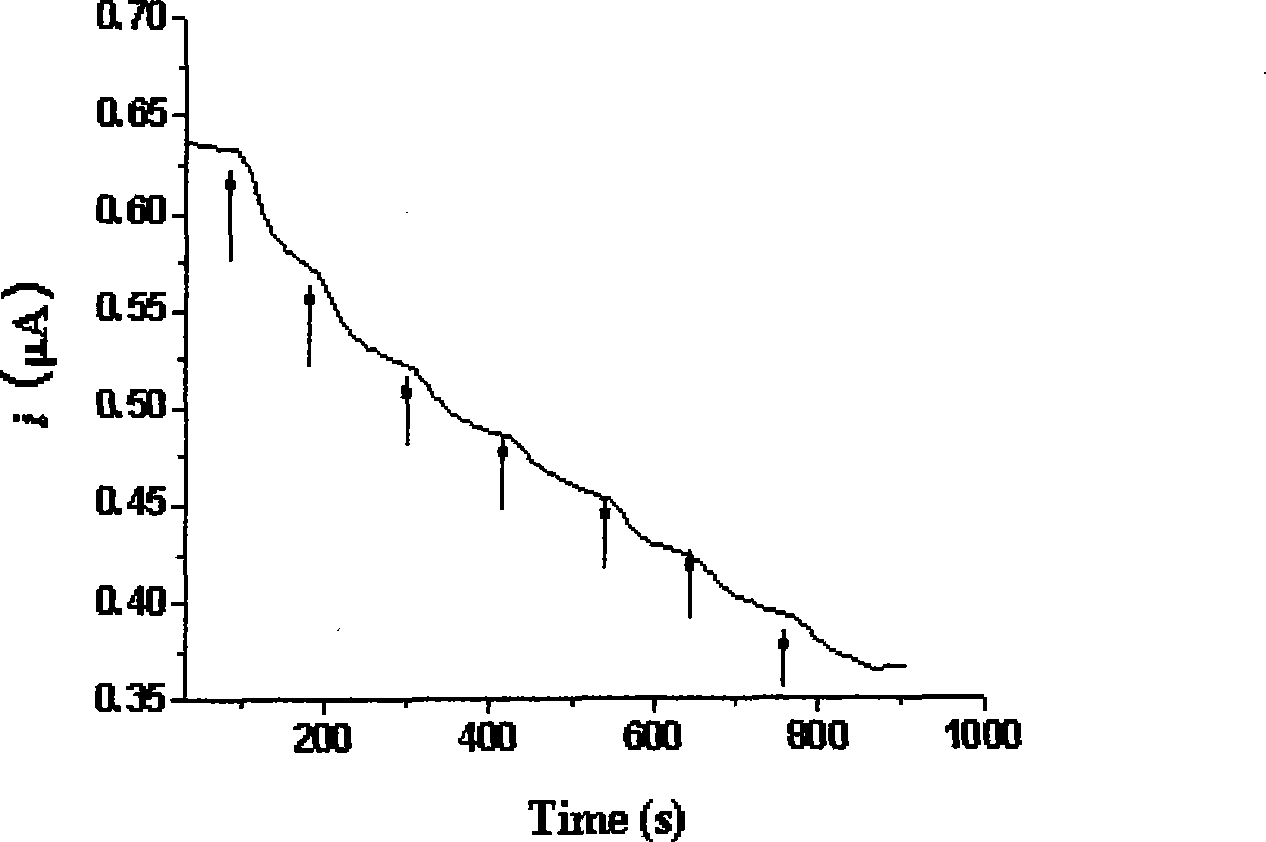Rapid measuring method for high-salt trade waste BOD
A technology for industrial wastewater and measurement methods, applied in the direction of testing water, material inspection products, etc., can solve the problems of easy cracking of sol-gel films, restricted use, easy swelling of graft copolymers, etc., and achieve simple and fast measurement methods, High accuracy and good stability
- Summary
- Abstract
- Description
- Claims
- Application Information
AI Technical Summary
Problems solved by technology
Method used
Image
Examples
example 1
[0022] Example 1: Linear response range and response time
[0023] The GGA standard solution commonly used in BOD electrode performance testing is made of small molecular substances: glucose and glutamic acid, so the microorganisms absorb quickly and the electrode sensitivity is high; As a result, the response sensitivity of the electrode to the wastewater in the factory area is not high, so the working curve obtained with the standard BOD solution is not universal. It is necessary to choose a typical high-salt wastewater in the factory area as the standard in order to obtain a high-accuracy test that can be used for the detection of wastewater in the factory area. Working curve.
[0024] Chondroitin sulfate is a pharmaceutical raw material extracted from animal cartilage, laryngeal bone, nasal bone, trachea and bone tendon. Proteolysis, salting out and other methods are commonly used in its production. The production wastewater is a typical high-salt and high-BOD Industrial ...
example 2
[0028] Example 2: Effect of Salt Concentration
[0029] Generally speaking, the salt concentration of high-salt industrial wastewater is in the range of 3% to 10%, so this experiment chooses different salt concentrations for long-term (>12h) online investigation; image 3 0%, 5%, 10% and 15% salt concentration, the time-current curves of the BOD electrode detecting wastewater samples with the same BOD concentration.
[0030] Depend on image 3 It can be seen that the response time of the electrode is longer under the condition of no salt, and the electrode can only work stably for about 3 hours, and then the current gradually decreases and tends to zero; under the condition of 5% and 10% salt concentration, the electrode responds quickly, and The performance is stable; and under the condition of 15% salt concentration, the response time of the electrode is the longest, and the stability of the electrode is poor.
[0031] The activity and stability of most enzymes in halo-tol...
example 3
[0032] Example 3: Electrode Stability
[0033] Insert the electrode into 20ml of blank phosphate buffer solution, turn on the magnetic stirrer, after the current is stable, add 200μL of wastewater sample, and record the response current; take out the electrode, insert it into the blank phosphate buffer solution, and after standing for 5 minutes, the output current will slow down. Slowly return to the initial value of the first measurement, then add 200 μL of wastewater sample, record the response current, and repeat the above operation; plot the relationship between the response current and the number of times the electrode detects the wastewater with the same BOD value, as shown in Figure 4 shown.
[0034] Depend on Figure 4 It can be seen that the response current of the electrode can reach more than 90% of the first measured value in 18 consecutive tests, and the main reason for the decrease in the response value of the electrode during repeated use may be that it repeat...
PUM
| Property | Measurement | Unit |
|---|---|---|
| diameter | aaaaa | aaaaa |
Abstract
Description
Claims
Application Information
 Login to View More
Login to View More - R&D
- Intellectual Property
- Life Sciences
- Materials
- Tech Scout
- Unparalleled Data Quality
- Higher Quality Content
- 60% Fewer Hallucinations
Browse by: Latest US Patents, China's latest patents, Technical Efficacy Thesaurus, Application Domain, Technology Topic, Popular Technical Reports.
© 2025 PatSnap. All rights reserved.Legal|Privacy policy|Modern Slavery Act Transparency Statement|Sitemap|About US| Contact US: help@patsnap.com



